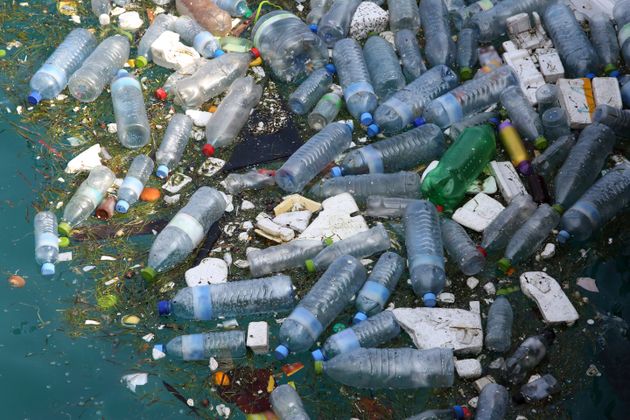
As a society, we are addicted to plastic. It’s in our appliances, protecting our food, and packaging our purchases. Most of us even have a plastic bag full of nothing but other plastics bags somewhere in our home. Plastic is so utterly embedded in our lives that each year the UK alone throws away 2.5 billion coffee cups, each with its own plastic lid and lining. Every minute, over a million plastic bottles are purchased globally and every year almost 8 million metric tons of plastic, enough to kill as many as 1,000,000 sea creatures, ends up in the world’s oceans.
We’re all aware of the environmental crisis our habit is creating, yet our collective efforts to tackle the problem are still in their infancy. All those coffee cups we use? There are only three recycling centres in the UK able to process their plastic lining effectively. Some businesses are starting to respond, with supermarkets like Asda, Tesco and Sainsbury’s all committing to getting rid of single use plastic bags and reducing their plastic consumption. However, when understood in context – our plastic usage overall is still increasing – these initiatives alone aren’t enough. So, the question is what can we as a society do to address the problem? And what role is there for government and scientists?
Understanding the trade-offs
While it’s easy for politicians to rail against the damage plastic does, the practicalities of phasing it out are much harder. There is no perfect option and every alternative has trade-offs that need to be considered. For example, we could stop using plastic bags for our shopping since we have a much more biodegradable option – paper. But the manufacture of paper bags uses 2.2 times more energy than the manufacture of plastic bags and 4.7 times more water, as well as emitting 3.1 times more greenhouse gases and 2.7 times more acid gases. Of course, we’d also need to cut down a lot more trees to meet demand. Other alternatives like aluminium and glass might be easier to recycle and reuse but they’re also more expensive, less durable and less malleable than plastic, which means our purchases get more expensive while also not being as well protected during transit.
In some cases, careful planning might allow us to get rid of plastic, but we must exercise caution – eliminating plastic in a number of scenarios could also remove some environmental upsides. For instance, the plastic wrapping we use to protect our food helps ensure it doesn’t go off, if we get rid of it then we will almost certainly see a dramatic rise in food waste. This isn’t to say that we don’t need to drastically reduce our reliance on plastic, or that it isn’t causing huge environmental damage. But any path to weaning ourselves off plastic must involve a broad, transparent conversation about what environmental burdens we are willing to endure and which we aren’t because, at least currently, there is no magic bullet whereby we can have all the benefits we presently enjoy with no costs.
Finding alternatives
The coffee cups example neatly encapsulates the problem. Although many people care about the environmental issues around using plastic, as a society we’ve proven we’re not willing to give up our morning takeaway cup of Joe, even though there are alternatives available. Even when coffee chains offer discounts for reusing ‘lifetime’ mugs, the convenience of plastics means that the majority of drinkers are still opting for the disposable option. This leaves two options – either we find new, more environmentally-friendly materials to replace plastic or come up with better, more cost-effective processes for our existing alternatives.
One group that can help us solve this problem are scientific researchers and specifically material chemists. These same innovators have created ‘unbreakable’ screens for our phones and materials that are able to repair themselves without human intervention. Giving them the technology, tools and support they need is our best hope for solving the plastics crisis. Unfortunately making these sorts of changes is never an easy process – for every breakthrough innovation, there are a dozen more dead-ends. Yet, given the urgency of the issue, it’s vital that scientists aren’t spending their time pursuing lines of enquiry that have already been found fruitless by another research team. This means being able to navigate through the flood of data that has previously been produced, finding the areas of potential innovation, and combining insights and techniques to create breakthroughs.
Meeting these challenges will be incredibly demanding – as a species we produce over 330m tonnes of plastic globally each year but recycle less than 10% of that – it’s a problem that must be tackled as the current status quo is simply unsustainable from a carbon emission and biodiversity standpoint. Until we provide our scientists with the support and tools they need to properly address our plastic dependence, we will continue to see our drinking water contaminated with micro plastics, cities polluted, and wildlife killed.
Christina Valimaki, VP Segment Research and Marketing, Elsevier R&D Solutions